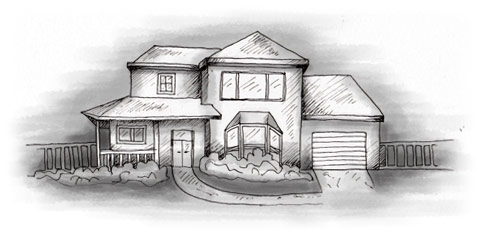If you own a property in the UK then you might find this guide useful, it takes you through the steps involved in repairing your flat roof. If your roof is in need of small repairs, take a look at this simple DIY guide. Otherwise you may wish to call in help from professionals.
Preventive measures
It’s a good idea to carry out a quick inspection of the roof to identify any repairs that need to be made before the onset of winter. Spotting these early will make repairs much easier to carry out and limit the damage once the weather takes hold.
Complete your inspection in bright light, looking for rips and tears in roofing felt, or worn patches. Make a detailed map of the roof, noting all of the areas which need attention; this will make things much easier when you come to carry out the repairs.
Materials
Any damage needs to be repaired as soon as possible. Once water starts getting into the roof space, settling in the insulation and timbers of the structure, you’ll soon be plagued with damp and, overtime, rot.
Flat roofs are usually made with roofing felt, applied using heat to bind it to the surface of the roof, creating a watertight layer. Working with hot bitumen is best left to the professionals, as it’s a highly dangerous material.
However, materials like self-adhesive roofing felts are perfect for DIY enthusiasts and are a great choice for making small-scale repairs. This felt is also a suitable option for the roofs of garages, storm porches and bay windows.
The finishing touches
To prevent further damage during the winter months, add a protective layer to the flat roof once repairs have been made. Use an effective gritting or chipping solution to increase drainage and prevent a build-up of water.
It’s also worth considering applying a solar reflective paint, before you apply the grit. Come summer, this will extend the life of your roof by reflecting light and heat which puts additional stress on the surface.
This guide was submitted by Tor Coatings

